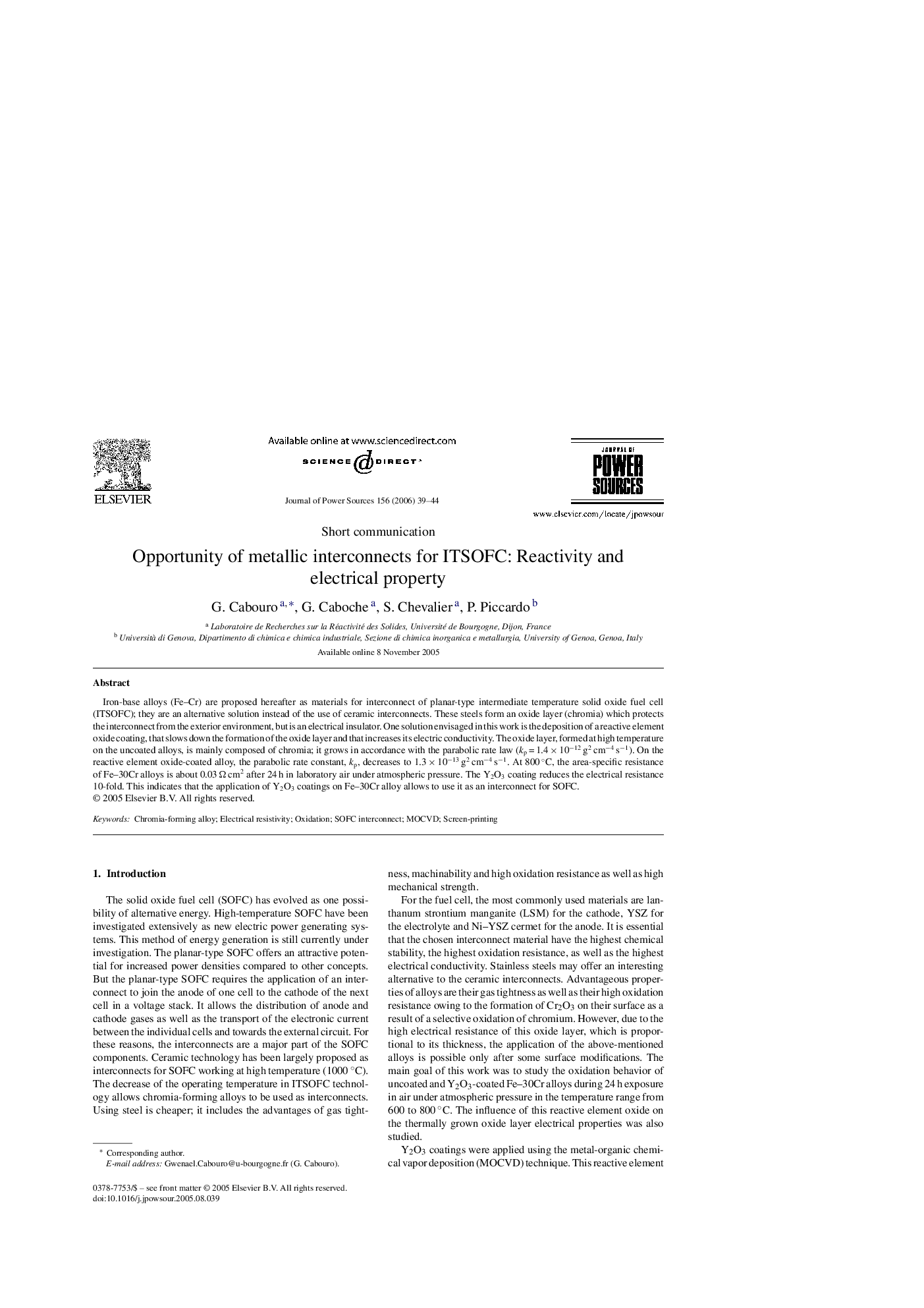| Article ID | Journal | Published Year | Pages | File Type |
|---|---|---|---|---|
| 1291289 | Journal of Power Sources | 2006 | 6 Pages |
Iron-base alloys (Fe–Cr) are proposed hereafter as materials for interconnect of planar-type intermediate temperature solid oxide fuel cell (ITSOFC); they are an alternative solution instead of the use of ceramic interconnects. These steels form an oxide layer (chromia) which protects the interconnect from the exterior environment, but is an electrical insulator. One solution envisaged in this work is the deposition of a reactive element oxide coating, that slows down the formation of the oxide layer and that increases its electric conductivity. The oxide layer, formed at high temperature on the uncoated alloys, is mainly composed of chromia; it grows in accordance with the parabolic rate law (kp = 1.4 × 10−12 g2 cm−4 s−1). On the reactive element oxide-coated alloy, the parabolic rate constant, kp, decreases to 1.3 × 10−13 g2 cm−4 s−1. At 800 °C, the area-specific resistance of Fe–30Cr alloys is about 0.03 Ω cm2 after 24 h in laboratory air under atmospheric pressure. The Y2O3 coating reduces the electrical resistance 10-fold. This indicates that the application of Y2O3 coatings on Fe–30Cr alloy allows to use it as an interconnect for SOFC.
